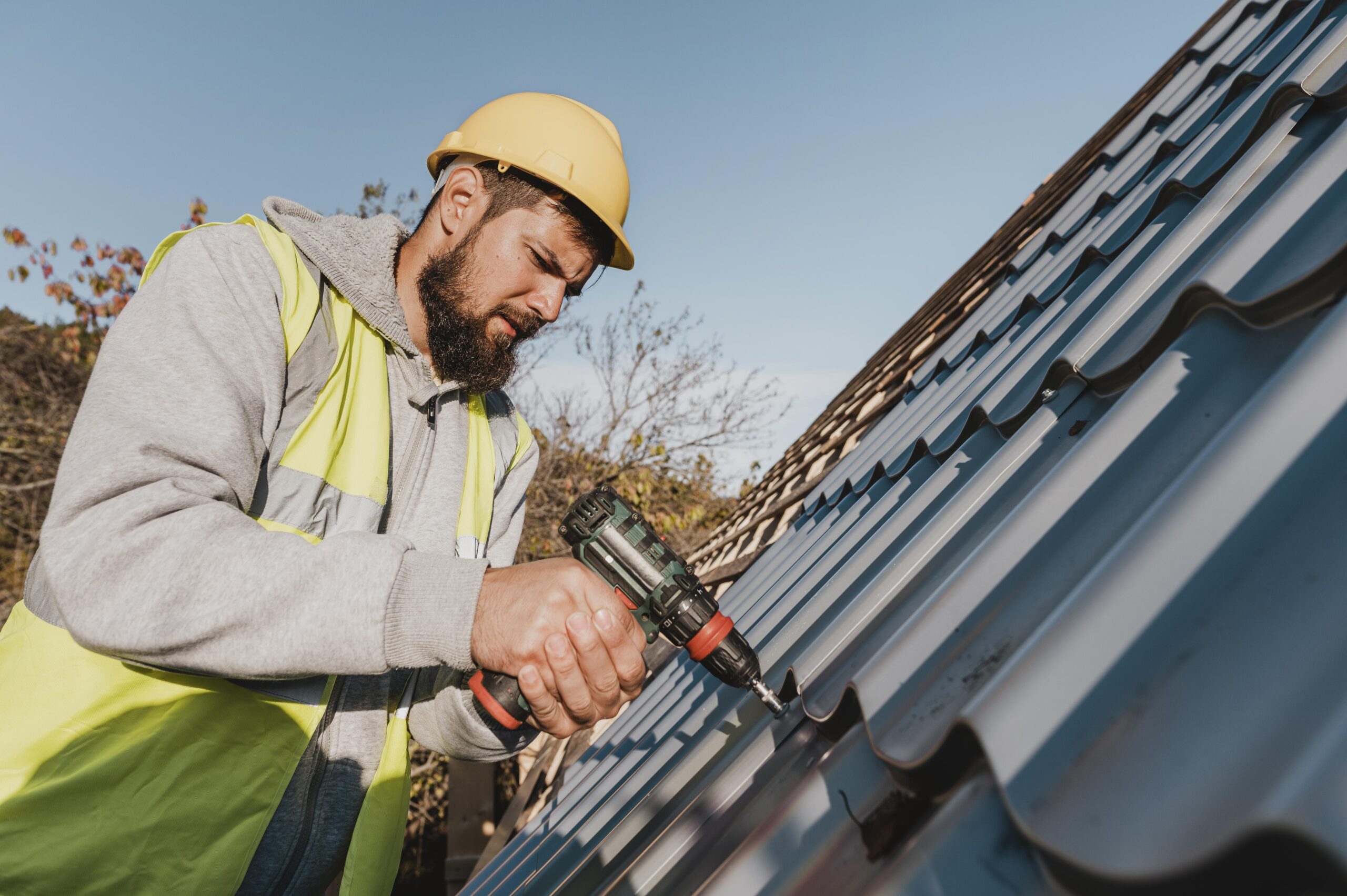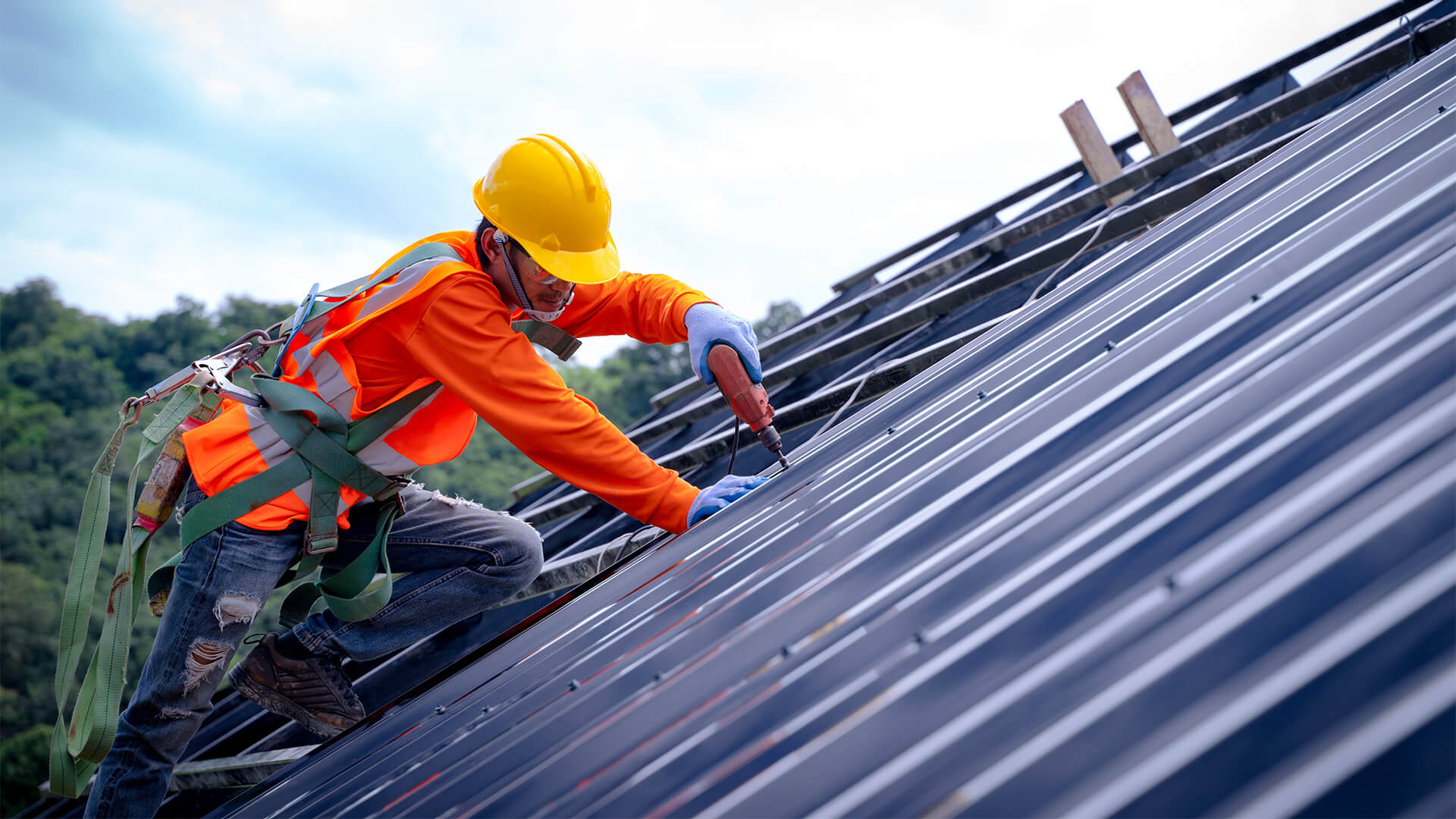Understanding the Various Kinds Of Roofs: A Comprehensive Overview for Homeowners
In the world of homeownership, picking the proper roof style is a decision that brings considerable effects for both capability and visual appeal. With an array of choices-- varying from the standard gable to the modern flat-- each type presents distinct benefits and obstacles that must align with the house owner's certain needs and environmental considerations. Recognizing these distinctions not just help in making an informed selection yet also influences long-term upkeep and power effectiveness. As we check out the ins and outs of various roof covering types, it comes to be noticeable that size does not fit all; the right selection might amaze you.
Gable Roofings
Saddleback roofs, characterized by their triangular shape, are among one of the most prominent roof styles because of their simpleness and efficiency in shedding water and snow. This layout features two sloping sides that fulfill at a ridge, enabling for efficient drainage and lessening the risk of water buildup. The steep pitch typically associated with gable roofing systems enhances their capacity to manage heavy rainfall, making them appropriate for numerous climates.
In enhancement to their sensible benefits, gable roofs use visual versatility. They can be adapted to numerous building designs, from typical to modern homes. The style can also fit extra features such as dormer home windows, which improve all-natural light and ventilation in the attic space.
Moreover, saddleback roofs provide enough room for insulation, adding to power performance. House owners can pick from a range of roof materials, including asphalt roof shingles, metal, and floor tiles, additionally improving modification options.
Despite their benefits, saddleback roofs may call for added support in areas vulnerable to high winds or hefty snowfall. On the whole, the saddleback roof continues to be a popular selection because of its mix of performance, resilience, and visual allure.
Flat Roofs
Flat roofing systems are typically acknowledged for their minimalist design and useful applications, especially in industrial and industrial settings (oahu roofing). These roofs feature a nearly horizontal or horizontal surface, which enables easy construction and functional room application. While they might do not have the aesthetic charm of angled roofs, level roofing systems use numerous benefits, specifically in metropolitan environments where making best use of space is important
Among the primary benefits of flat roofs is their accessibility. Home owners can utilize the roof covering room for various functions, such as roof yards, balconies, or solar panel installations. In addition, level roof coverings are generally much more affordable to keep and install compared to their sloped equivalents, as they call for fewer products and labor.
Typical products made use of for level roof coverings consist of built-up roof covering (BUR), changed bitumen, and single-ply membranes, each offering unique benefits. In general, level roofings offer as a practical and adaptable option for lots of homeowners and services alike.
Hip Roofings
Hip roofings are identified by their sloped sides that assemble at the top, developing a ridge. This design is distinct from gable roofs, as all 4 sides of a hip roofing slope downwards towards the wall surfaces, supplying an extra stable structure. The angle of the inclines can differ, enabling convenience in architectural visual appeals and functionality.
Among the primary benefits of hip roof coverings is their ability to endure heavy winds and negative weather. The sloped surface areas allow far better water drain, reducing the threat of leaks and water damage. Furthermore, hip roofing systems offer increased attic area, which can be utilized for storage or perhaps transformed into livable areas.
Nonetheless, building a hip roofing can be more complicated and pricey than easier roofing kinds, such as saddleback roofs. The added material and labor associated with developing the inclines and making certain proper architectural integrity can result in greater expenses. Despite these disadvantages, several house owners favor hip roof coverings for their longevity, visual allure, and potential for energy efficiency.
Mansard Roofs
Mansard roof coverings, often acknowledged by their distinct four-sided layout, feature 2 inclines on each side, with the reduced incline being steeper than the top. This building design, originating from France in the 17th century, is not only aesthetically enticing but functional, as it makes the most of the usable space in the top floors of a structure. The high lower slope enables even more clearance, making it an ideal choice for lofts or attic rooms, which can be exchanged living rooms.
Mansard roofings are characterized by their convenience, accommodating various building designs, from conventional to modern-day. They can be constructed with various materials, including asphalt shingles, slate, or steel, offering property owners with a variety of options to fit their budget plans and preferences. Additionally, the style enables the assimilation of dormer home windows, improving natural light and ventilation in the upper degrees.
Nevertheless, it is necessary to take into consideration the potential disadvantages. Mansard roofings might need more upkeep because of the intricacy of their layout, and their steep inclines can be challenging for snow and rain drainage. Overall, mansard roof coverings combine elegance with functionality, making them official site a prominent choice amongst home owners seeking distinctive architectural features.
Dropped Roof Coverings
As house owners increasingly seek simplicity and performance in their building layouts, dropped roofs have actually become a prominent selection. Characterized by a single sloping aircraft, a shed roofing presents a minimal visual that enhances different home designs, from modern more information to rustic.
One of the primary benefits of a shed roofing system is its simple construction, which commonly equates to decrease labor and material prices. This design allows for effective water drain, minimizing the threat of leakages and water damages. Furthermore, the vertical slope offers adequate room for skylights, boosting all-natural light within the interior.
Lost roofing systems also use adaptability in regards to use. They can be effectively integrated right into enhancements, garages, or exterior structures like sheds and structures. Additionally, this roof style can suit various roofing materials, including metal, asphalt shingles, or even green roof coverings, straightening with environmentally friendly initiatives.
Nevertheless, it is vital to think about local climate problems, as hefty snow loads may demand adjustments to the roofing's angle or framework. In general, shed roofing systems provide a functional and cosmetically pleasing alternative for house owners wanting to make the most of capability without endangering style.
Final Thought


Gable roofs, identified by their triangular form, are among the most prominent roofing styles due to their simpleness and efficiency in shedding water and snow. oahu roofing. The steep pitch commonly associated with gable roof coverings enhances their ability to take care of hefty rainfall, making them suitable for various climates
While they may do not have the visual allure of pitched roof coverings, level roofings offer various advantages, specifically in metropolitan settings where making best use of room is vital.
